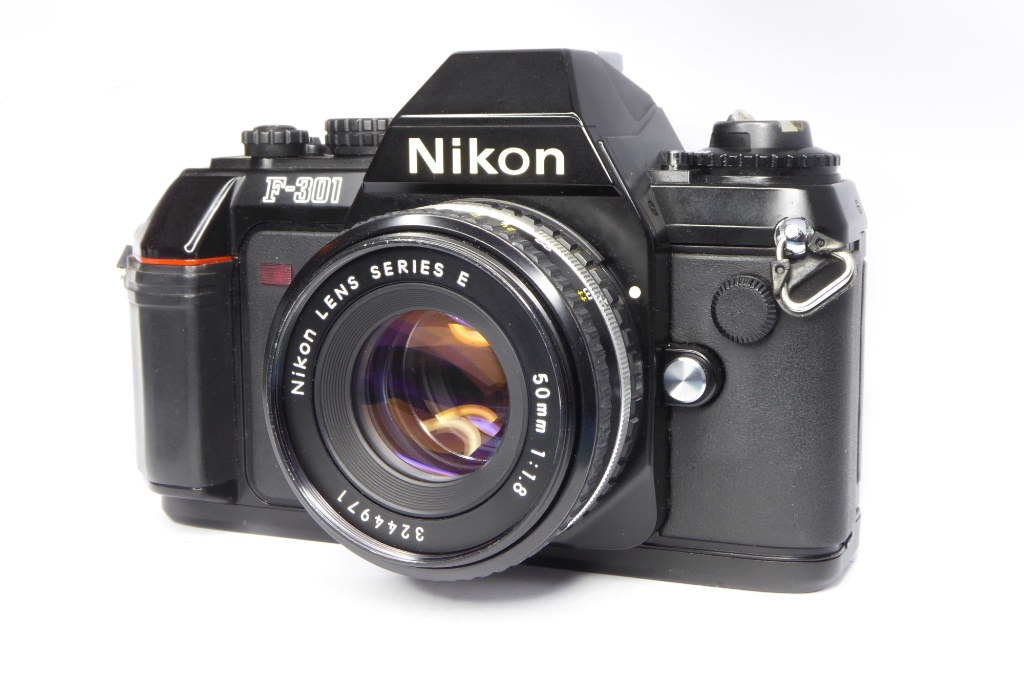
Nikon F-301 Review:- One of the most underrated 35mm film SLRs in todays world has to be the Nikon F-301. I suppose that is to be expected considering it had a very short production life and was generally hated in its day by the Nikonista fraternity.
Launched in 1985 and withdrawn around 1987 the Nikon F-301 was almost the last manual focus cameras from Nikon for the consumer end of the market (the FM 10 was made by Cosina) and followed on from the rather nasty EM and FG models but my-oh-my – third time was a charm. The Nikon F-301 despite its Nikonista detractors is a marvellous camera to shoot with.
Let’s take a look at how it arrived, why it was dead before its time and just how good it really is.

When is a Nikon F not a Nikon F? – When its a Nikon F-301 of course! – Hated by Nikon fans but every bit as good as anything Nikon ever made.
Nikon F-301 Review : Third Times a Charm…
After the major success Canon had with the AE-1 launched in 1976 all of the manufacturers wanted a taste of that large market that Canon had successfully opened up and every major manufacturer got to work to scoop up some of those consumers with spare cash in their hands and a fancy to own a 35mm SLR. Minolta would be the only player to seriously eat into Canon’s dinner but it’s fair to say everybody wanted a slice of that pie including the mighty Nikon – home of the serious camera for professionals.
Nikon, not wanting to be left out of this new gold rush, got stuck in, rolled up their sleeves and launched the EM in 1979, an unashamed entry level camera, the EM supported only aperture priority auto. Nikon even made the camera tiny so it would better suit female sized hands (aww bless them). The EM was barely in production for three years before being withdrawn. Reliability was a big issue with the EM. Its electronics had a reputation for unreliability and doubtless Nikon feared for their brand image, and also probably got tired of whiney-ass consumers cluttering up the repairs department. On the plus side the low cost Series E glass designed for the EM really cut the mustard – being within an ace of the top end Nikkors.

Undeterred by a minor set back like an unreliable camera that no one wanted (not even the girly types it seemed) Nikon rolled up their shirtsleeves (again!) and got on with producing a replacement. This would be the Nikon FG released in 1982.
The FG would be the first Nikon ever with program mode and the first Nikon with TTL flash (though trailing behind Minolta who got there first as usual a year earlier with the X-700). The FG also supported full manual and aperture priority and with its vertical metal bladed shutter it should have been a winner but, sadly, those pesky electronics let it down again and like the EM, Nikon found themselves knee deep in repairs and dealing with even more legions of shouty customers on the phone.
Oh dear! The consumer end of the market was going to be a lot harder than I expect anyone at Nikon imagined.
Doubtless one of the problems Nikon faced was that before the EM they had never really dabbled in the bottom end of the market except for point and shoots. It’s all very well being ace at producing top end gear where money is no object either in production cost or the final ticket price but getting the right blend of features and reliability at the bottom end of the market actually takes some doing as a fair few manufacturers had said on their way to a bankruptcy hearing.
It’s easy to forget that back then while Nikon, Minolta, Canon et al were busy cramming silicon chips into tiny cameras the computer I am typing this on and the one you are doubtless reading it on was in its infancy.
PCs back then were B-I-G, like the size of a suitcase big, expensive and almost no one owned one.
The bottom line here was getting chips into a camera to run off tiny voltages and be fast and reliable was not so easy as it would seem to younger folk today who take reliability for granted. Back then TVs, Stereos and the like failing was a fact of life.
Nikon, and you have to admire their persistence here, were unfazed. A lesser manufacturer may have given up (and indeed some did, and some went bankrupt too!), but the FG was duly retired in 1985/86 when they unveiled consumer camera number three.
I would like to believe they called it the F-301 because it was in fact the third time around to try and get it right. It would make a good story except they ruined it by calling it the N2000 for the US market!
So would the F-301 be a case of third times a charm? Read on…
Nikon F-301 Review : Shock and Awe
Its fair to say the Nikon-F301 made quite a splash when it arrived. Its styling was somewhat radical copying the overall look of the professional class F3 in its general appearance including the new Nikon brand styling red stripe.
The F-301 was the first Nikon to have a polycarbonate body and the first Nikon to delete the film advance lever in favour of a built in motor drive – you could hear the Nikonistas getting triggered by the noise that grinding teeth make when en-masse – almost as loud as the racket the F-301 makes when its motor drive kicks in. It was also the first Nikon to use DX coding.
Some considered it a new dawn for Nikon but traditional Nikon users hated it with the sort of passion normally seen in medieval religious warfare.
They hated the plastic, they hated the complete reliance on electronics (there’s no mechanical mode here sonny), they hated it because it wasn’t made out of armour plate and didn’t have lots of tiny gears whizzing around. They had only just accepted the professional grade F3 having an electronic shutter and now this…a completely plastic camera!
First it was the threat of nuclear war, then the rise of international terrorism, we might all be murdered in our beds and now this – a Nikon made out of plastic! It was all too much! Surely the end of days was fast approaching!
That was the shock – what about the awe. Well the F-301 was the consumer camera to end them all, verging on prosumer territory and even in use by pros (more on that later).
By the time the F-301 arrived Canon had the AE-1P with program Mode and Shutter Priority (SP) and Minolta had the X-700 with Program Mode and Aperture Priority (AP). The F-301 would support Aperture Priority (AP) and TWO Program modes. One for normal use optimised for aperture and one for fast action optimised for shutter speed. On top of that Nikon would use a metal vertical bladed shutter to give the camera stunning accuracy and speeds up to 2000th where the Canon AE-1P and Minolta X-700 used cloth horizontal shutters which limited them to a maximum speed of 1000th.
Nikon really pulled all the stops out with the F-301 and gave it TTL flash like its predecessor the FG, a very fast internal autowinder/motor drive that can run faster than some dedicated motor drives and on top of that gave it one of the brightest and sharpest viewfinders of any SLR. Only Minoltas X-700 with its Acumatte screen can beat it and it would be a photo finish as to which is the brightest and best. The focus screen is by any reasonable definition superb and some go as far as to say maybe the best focus screen Nikon ever made.
To help the beginner Nikon gave the camera an automatic film loading function which made loading film as simple as most of the point and shoots, PLUS DX coding so the camera would set the film speed for you if you wished though you could set it manually and the camera would helpfully alert you if no DX coding was set. It also used AAA batteries which gave it a huge battery life even if you were using the motordrive. For an absolutely flat out superb prosumer camera Nikon cut the price and managed to get it into the consumers mitts around 10% cheaper than the front running rivals from Canon and Minolta.
Oh yeah – they also got it to be reliable. Third time really was a charm for Nikon.

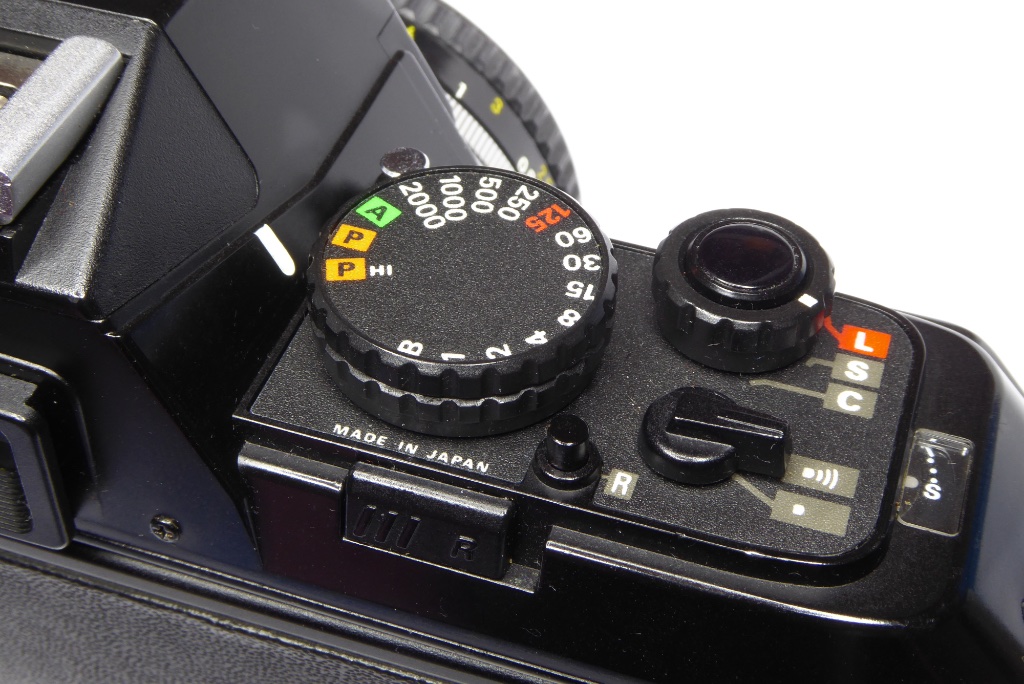
Nikon F-301 Review : Poor Boys F3
It has been said of the F-301 that it’s a poor boys F3 but that doesn’t really do the F-301 justice making it sound like a cheapo knock off. Inexpensive it may have been but it’s a fabulous shooter of a camera in its own right.
Its program mode is just about the best I have ever used and left to its own devices it can almost always get the shot even when lighting is tricky.
Nikon had produced the Series ‘E’ lenses for the ill fated EM series and most F-301s were sold with the Series ‘E’ lenses as a low cost alternative to the Nikkor lenses mostly associated with Nikon. These budget lenses now have a cult following and frankly they are within a hair as good as the Nikkors. I seriously doubt anyone would ever notice the difference . You can read about the Series E lenses in the preamble to the repair guide here.
I came to the F-301 via owning Nikon Fs as a Pro. For my holiday camera or just lightweight use I had traditionally used either a Pentax Spotmatic or an Olympus OM-1. The Nikon F is wonderful but its also heavy and bulky so for holiday use and day trips with the family I would take a lightweight swinger with me.
In a moment of madness and uncharacteristic brand loyalty I bought an Olympus OM-4Ti from a shop while out and about as my new swinger and found I hated it.
I hated its overall poor performance, hated its fussy meter and mostly hated it because it ate batteries like Smints and spent more time at Olympus being repaired than it spent doing any actual shooting. I was at the end of my tether withe the OM4Ti after a few years of it always playing up and while in my favourite camera shop venting about it while chewing the edge of their countertop they helpfully offered a NikonF-301 on approval. As a consummate Nikon F user I was somewhat surprised by the F-301, it looked so unlike any Nikon I had ever seen but I was hardly a brand loyalist (The OM-4Ti had cured fangirl-itis for good) so I thought ‘well why not?’ it could accept most of my Nikon lenses which was a bonus. A big plus for me at the time was I did a lot of travel to out of the way places – while you could always find someone who could sell you some AAs finding someone who could sell you some weird mercury battery was always a challenge. I spent a whole day in Kefalonia in ’82 seeking SR44s to keep the OM4Ti running as it munched its way through the entire carton of spares!
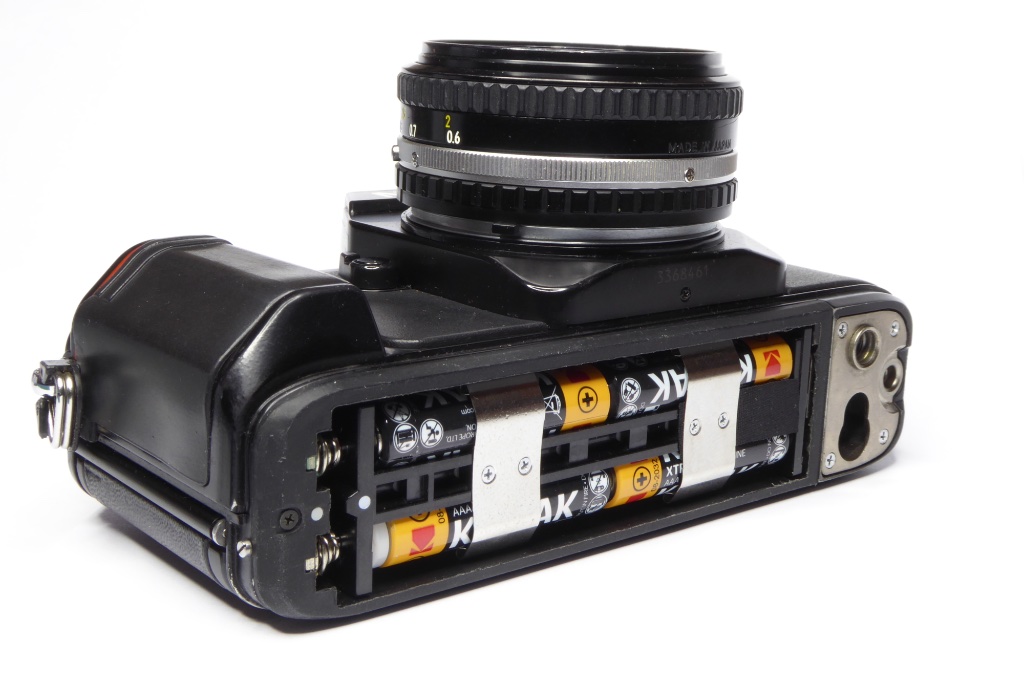
I found in use the F-301 performed amazingly well. With its very fast built in motor drive it could rival almost any other motor drives for speed and get it all in a relatively compact package – smaller and lighter than almost any other SLR with a motor drive attached.
The only missing feature was a depth of field preview which most budget and consumer cameras leave off and which, back then doing press work, I never used anyway.
I loved its big bright focus screen, its near perfect program mode which could always pull a shot and its toughness. It may be made of plastic but it’s a tough camera.
I liked it so much I not only went back and paid for it but had another one as a back-up. Over time the F-301 started to be used more and more for professional work and there hangs a tale.
One of the F-301s was damaged badly on a freelance shoot and so I went back to get another and damn! It was no longer available.
I can’t state the veracity of this but the guys in my favourite store told me that Nikon had stopped making it because it was starting to eat sales of their top end gear. Press packers like me who always needed spares had usually of course bought a spare F3 body or an FM. Some of these had opted to start using F-301s as backups and why not! It was cheaper to risk an F-301 in a riot than an F3 after all. Now I can’t say whether that’s true or not but it has a ring of truth to it. I suspect the real reason though was the rise of Auto Focus cameras. After all the Nikon F-501 came out in 1986 and was basically an F-301 with Auto Focus. With Auto Focus taking over the the market F-301 was retired in 1987 – barely two years since it had launched.
I managed to find a spare from shelf stock elsewhere and continued using them and enjoying them until the millennium when I started cutting over to digital.
A word here on professionals using amateur gear. It’s always worth remembering that owning professional cameras doesn’t make anyone a pro. The feature sets may be richer but the real magic in photography is the eye of the photographer. Most of the 20th centuries most iconic photos were taken with cameras with a lot less sophistication than the Nikon F-301. Check out Steve McCurry’s Afghan Girl taken with a prosumer Nikon FM2.
Here’s some pics on a trip to Bruges – all but one were done with a Nikon F-301 and a 50mm f1.8 E Series lens on Program mode. As you can see the camera calls it pretty close to perfect.

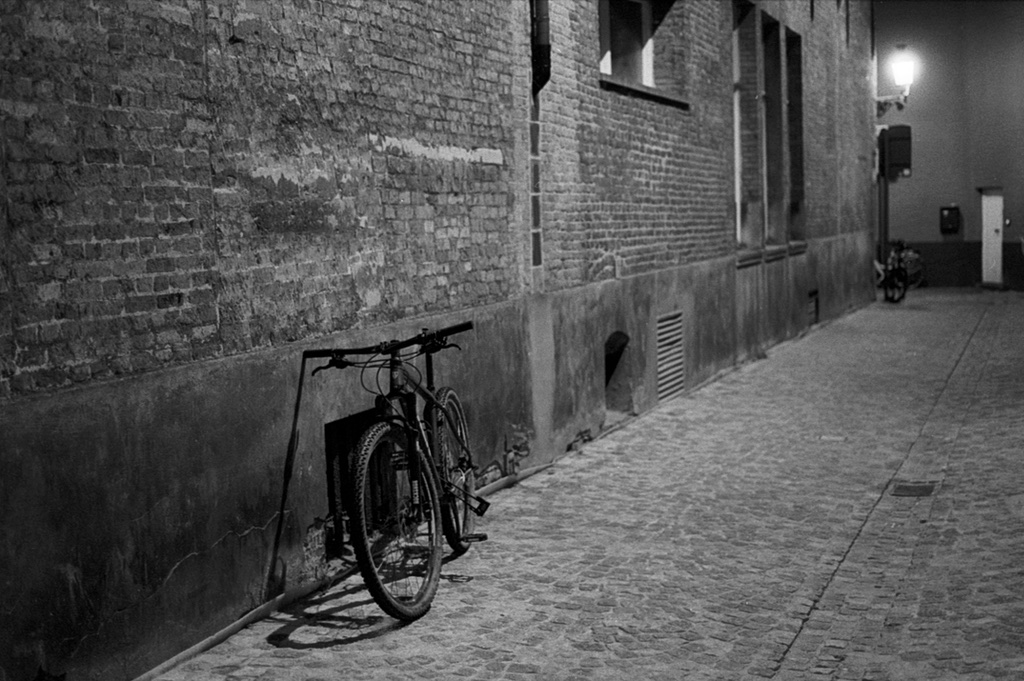
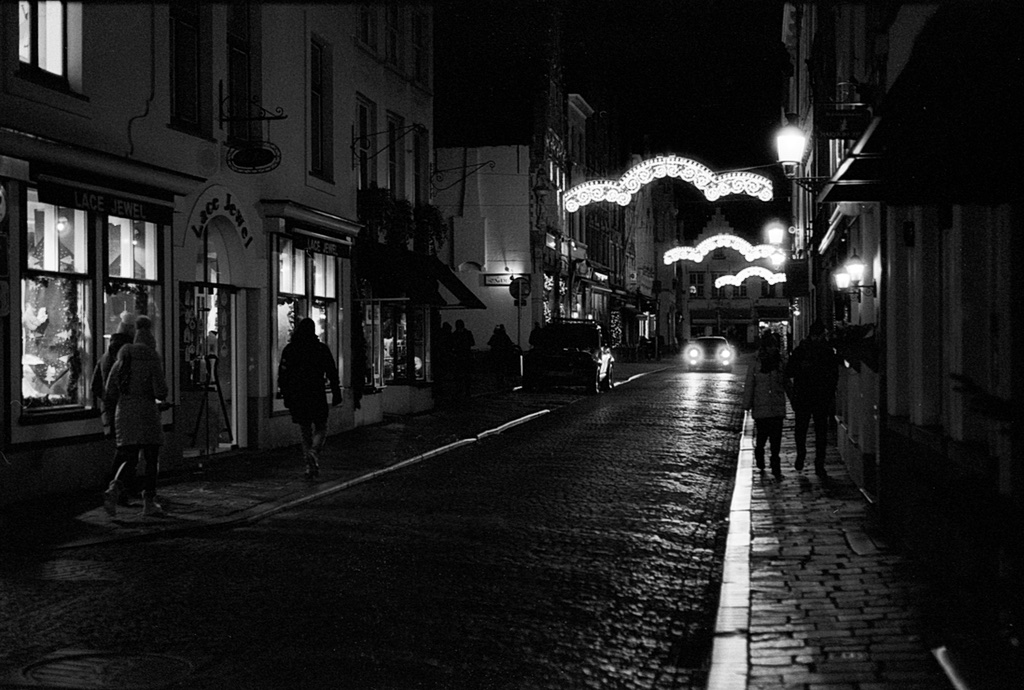

Nikon F-301 Review : Loud and Proud
The F-301s worst aspect by far is the racket the motor drive makes. It’s ok when you’re covering a riot or being all elbows in a press pack but for a lot of subjects the clamour of the auto winder is a bit distracting. Ok you can imitate the start of ‘Girls on Film’ or even pretend you’re a super spy getting shots of a Bond villain but it can be quite off-putting for some stuff.
On the up side the camera uses 4x AAA batteries and these last longer than most people will be shooting film for. Typically they can last for a great many rolls of film – as many as 30 rolls before you need a battery change. If that’s not enough for you Nikon did a bigger battery base as an option which would take 4x AAs. Unfortunately those giant AAA and AA batteries mean the tripod mount can’t be in the centre of the camera and Nikon used a very offset tripod fitting. You could buy a special adaptor to add to the base of the camera but obviously its increased bulk and weight. It’s just as well the batteries last a long time because without them the camera is a brick – theres no manual backup at all.
The F-301s greatest virtue though was the amazingly good viewfinder and the amazing Program mode which can almost always pull off the shot even when the light is tricky. Program mode on the F-301 works best with AIS lenses. It will run with AI but there are compromises. Non-AI lenses are a complete no-no. Non-AI lenses lack the slot for the cameras aperture follower and will either jam the follower or worse break it.
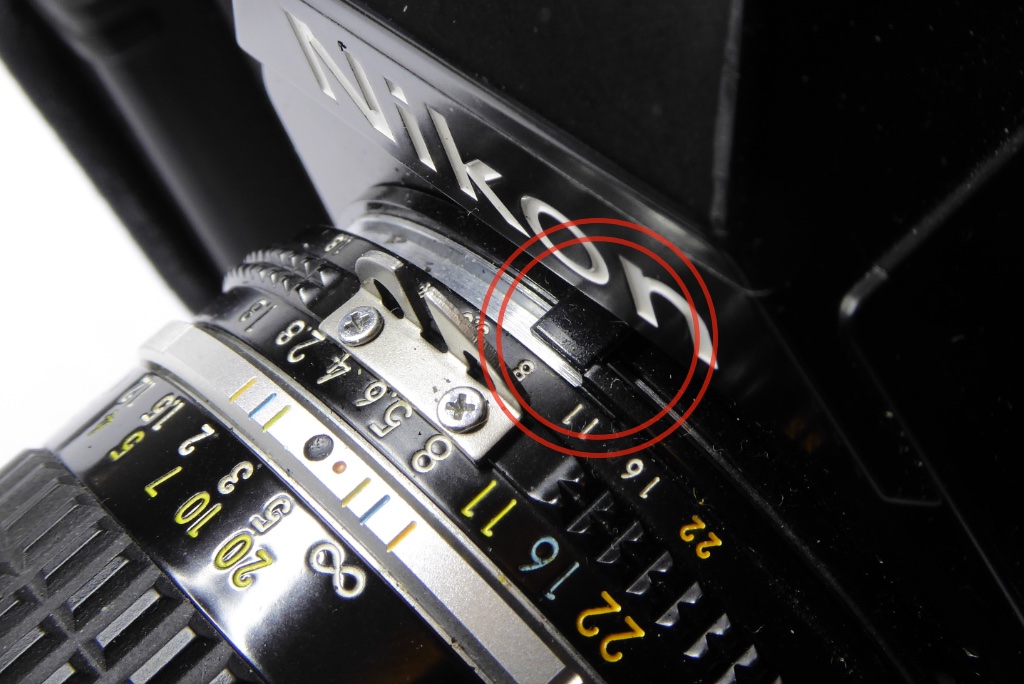
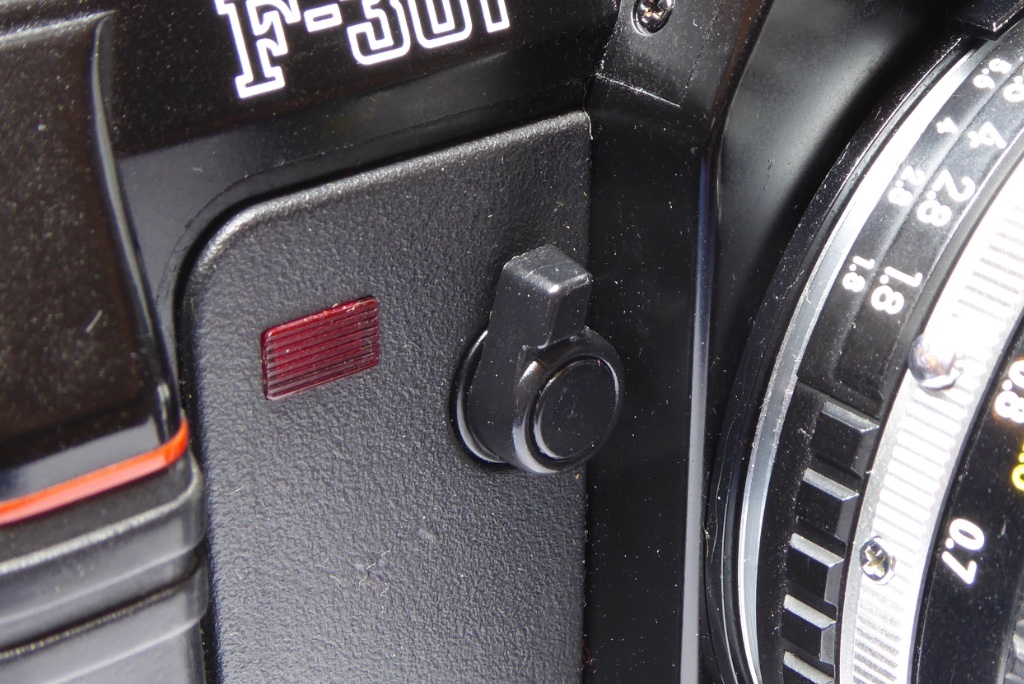
The viewfinder contains LEDs along its right side which show the shutter speed you have selected and the shutter speed the camera suggests or, which it will shoot at, if in AP or Program mode. The LEDs will also warn if you have selected Program mode but have not turned the lens down to minimum aperture.
The focus screen has a split image focus finder plus a microprism collar and a circle which shows the meter weighting zone – like most Nikons the meter is 60/40 centre weighted and the circle shows the 60% zone.
When paired up with its fast 2000th of a second shutter speed and traditional controls for full manual operation the camera is a wonderful blend of high tech mated to traditional controls. Electronic it may be but there’s not an LCD panel in sight which gives the camera very traditional feel even though the whole thing is being run by a microprocessor.
Nikon F-301 Review : Third Times a Charm (Part 2)
The biggest headache with buying a Nikon F-301 today is the fact that although back in 1987 they could be trusted, like many electronic cameras the F-301 can suffer terminal failures due to its ageing electronics. I had to buy three duds to get a good one and another three duds behind that to get a second one that was also good.
The biggest risk to them is the damn batteries – you see the batteries lasted so long that people put the camera away and forgot about the batteries. They had probably never changed batteries since buying the camera new. Of course large alkaline batteries have a nasty habit of leaking and filling the camera with toxic acid and fumes. The surest way to know the provenance of an F-301 is check the base which is also the battery cover – if it shows evidence of corrosion then reject it unless the seller has evidence showing the camera is a complete runner.
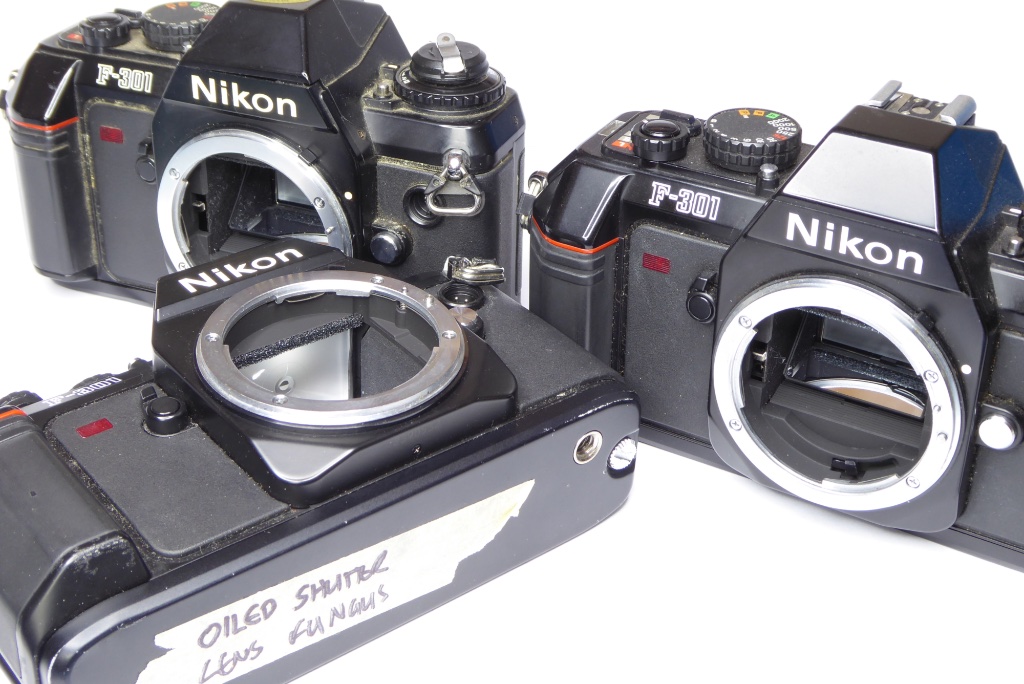
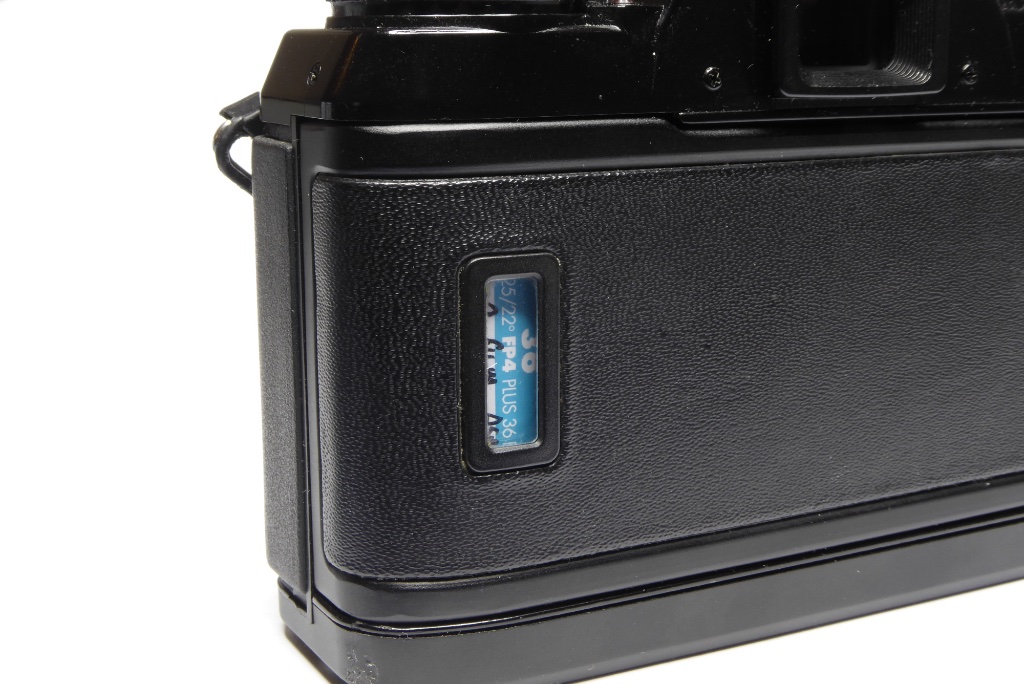
Nikon really did get it right back in the day and assuming you can find a good one it should be reliable enough. One of its upsides is that it was consumer grade and many mums and dads will not have used the camera much when they bought it. Meaning any good ones will probably still shoot a fair few thousand frames before they ever need attention so long as grandad took the batteries out!
The shutter in the F-301 is VERY accurate – among the most accurate I have ever tested. Of the good ones I have acquired the shutter can usually hit almost the exact speed with very little variance on speed every time. Typically a cloth horizontal shutter will have a deviation of around 20% and will deviate somewhat from shot to shot. The vertical shutter in the F-301 is almost always exactly right and has amazing consistency.
The final consideration you should give to any Nikon though is the cost of lenses. Nikon lenses command a big price tag even for the budget ‘E’ series which have now reached the level of Nikkors for pricing on the second-hand market. So, if this article makes you want to own a Nikon F-301 then consider the lens costs before you jump in. Even third party lenses get pricier as soon as they have a Nikon mount.
Nikon F-301 Review : Forgotten by Most
If the F-301 had been in place a bit earlier I suspect it would have been a world beater but in business timing is everything. Some products arrive too early and scare the consumers away, some arrive too late and the market has moved and some appear just in time but face reliability or production issues.
For the Nikon F-301 it was just the perfect product but two years too late. With the Auto-Focus revolution in full swing by the time it arrived its core market of prosumers was melting away.
The Nikon F-301 today has been generally forgotten. It was in production for such a short time and it commands little respect from Nikon fans who were and are more swayed by Nikon F2s, FMs and FEs which are more pro or prosumer cameras with a better pedigree and look more Nikon than the F-301 ever did.
The F-301 may have been a case of third times a charm from the perspective of Nikon getting it right at the budget end of the market but like almost every late model manual focus 35mm SLR the F-301 would be a casualty of the autofocus revolution.
Forgotten by most – not by me who still enjoys the F-301 mightily – you might too.
Nikon F-301 – Pros & Cons
Pros
- 2000th second shutter speed
- Super accurate shutter
- Superb Program Mode
- Standard Batteries
- Fast built in Motor Drive
Cons
- Odd tripod socket
- Styling
- Lens costs
- 100% Reliant on Power
Further Reading
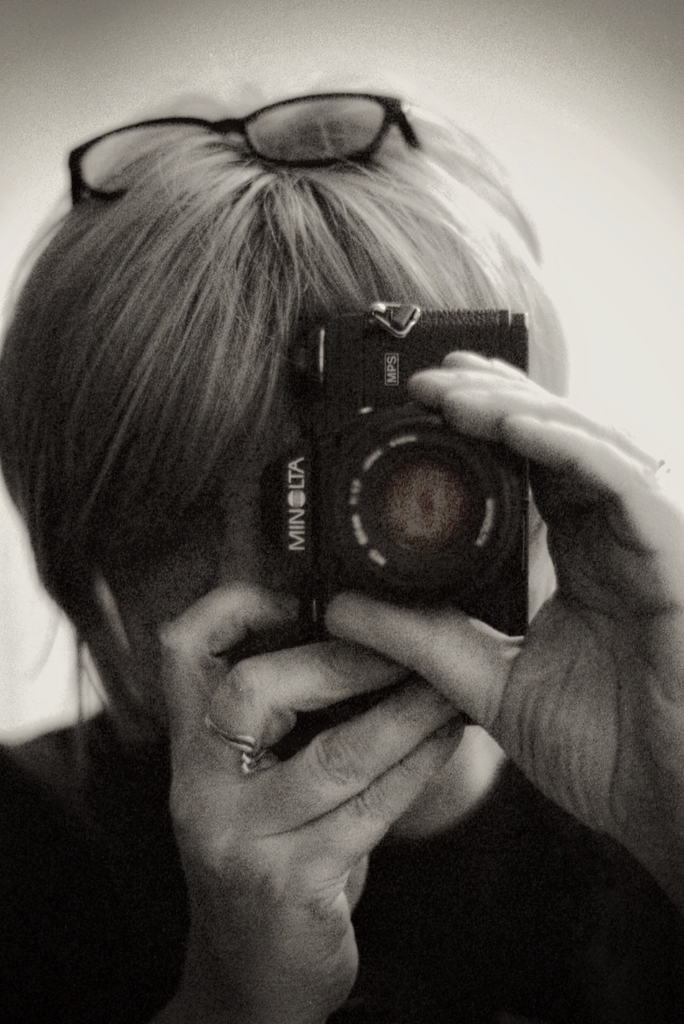
Mel is one of the driving forces behind High 5 Cameras and writes all our articles.
Starting serious photography back in 1972. Over the years she got to shoot film with most of the major brands in 35mm and large format as both a studio photographer and content provider for websites in the early life of the web. These days she is rediscovering photography and has become the GOTO person for knowledge on camera repair advice.


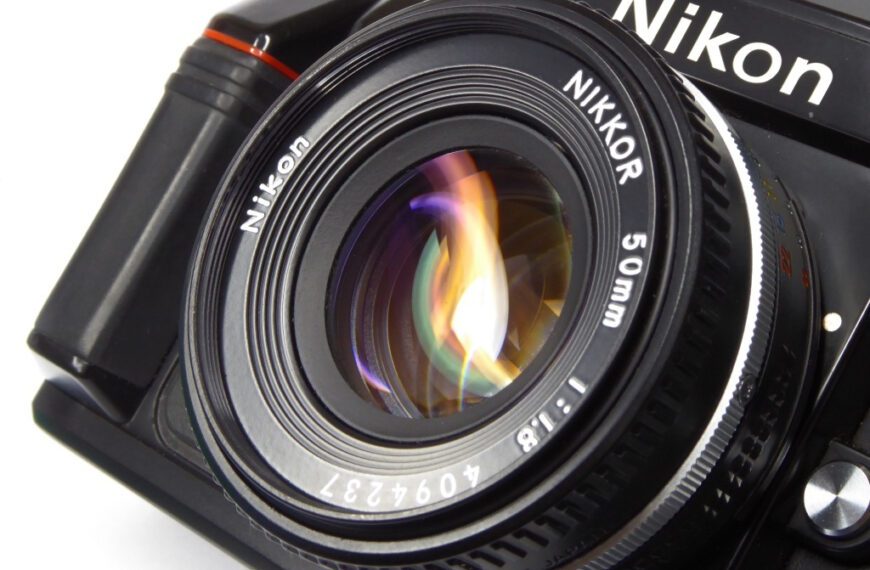
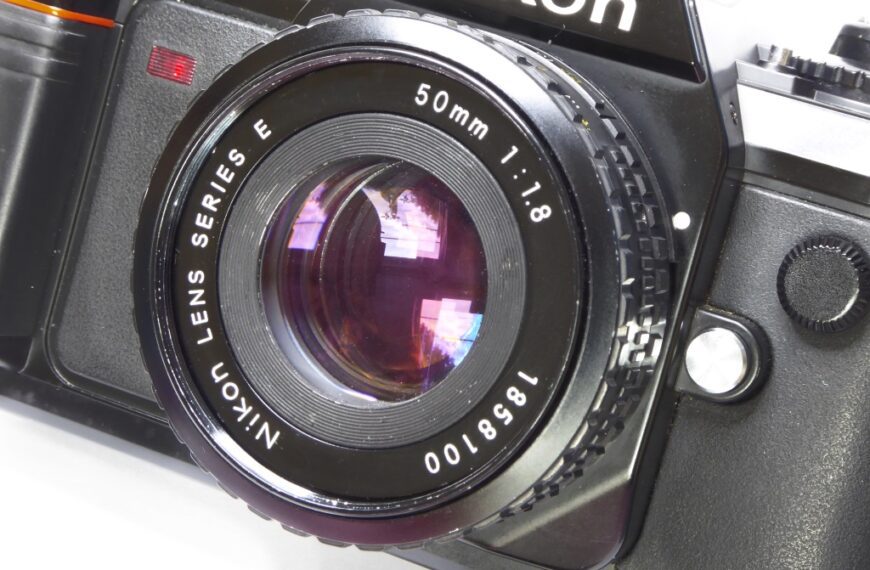
Correct me if I am wrong, Mel. However, I am sure that the FA was the first Nikon camera to use a program(me) setting in 1983. And the F-301 was known as the N2000 in the North American (predominantly U.S.A.) market; it was the F-501 that was marketed as the N2020. Otherwise, a quite helpful and very welcome article. Thank you for the stellar review, and your moody photographs. – Christopher, in Melbourne in Australia
Hi, Your quite right – it was the N2000s my mistake. Being a Brit I am only dimly aware of what happens in the US 🙂 But I think you are wrong about the FA being the first with program. My information is that the FG had it first in 1982.
Glad you enjoyed the article.
You’re right, Mel! I stand corrected. The FG came out in 1982, and the FA in 1983. So: My mistake; sorry. (I think that you had initially stated that the FG appeared in 1984.) I like my F-301 for its go-anywhere attitude and its super-bright viewfinder. Being a Nikon fanboy, I have plenty of lenses that suit the camera and its variety of photo-making possibilities. My only bugbear is the battery-compartment corrosion issue; so, I make a point of scouring out the contacts with an emery board whenever I notice the gunk building up again. Otherwise, the camera is a below-the-radar keeper for me when I’m not shooting one of my big rigs such as the F4 or F5. Good light to you. – Christopher
I was in fact in error and corrected it. I was sure I was right but had in fact mistyped the date – most of my time over the past few weeks has been my CLA guide to the Minolta SRT which has consumed about 100 hours of work so it was missed on the read through.
It always amazes me that having typed it, spell checked, had a read through, had Claire read through as well and then a third read through typos and mistakes are always there. I usually spot most of them the moment I hit the ‘publish’ button.
I never went beyond the F2 as a Nikon user and generally prefer the original F. I had a general nervousness about anything electronic after being stung with the Olympus OM4Ti and later on the original Canon EoS.
When in the Maldives I was carrying a Canon EoS, the Nikon F-301 and a Nikon F. Wouldn’t you know it the EoS used three rolls of film – not a single picture on any of them due to a shutter fault. On return it was repaired by Canon but continued to have issues. In the end I just gave up with it and thats kind of why apart from the F-301 which had proved itself as reliable I was always a bit off anything electronic.
Visually this is a clone of the f-501/N2020, the only difference being that camera was Nikon’s first purpose built auto-focus body (the F3AF having been adapted from the F3), and came out a year later in 1986. My guess is Nikon was defraying costs and hedging their bets in case the auto-focus camera flopped by having the two models share so much in common.
Going back to Nikon’s compact consumer SLR line that started with the EM, a real sleeper camera is the FG-20. Visually it looks like an FG, but it lacks program exposure. It does have aperture priority auto and manual, which is all most serious amateurs really need. That also means simpler electronics, and (probably) greater reliability. Plus, they remain relatively inexpensive.